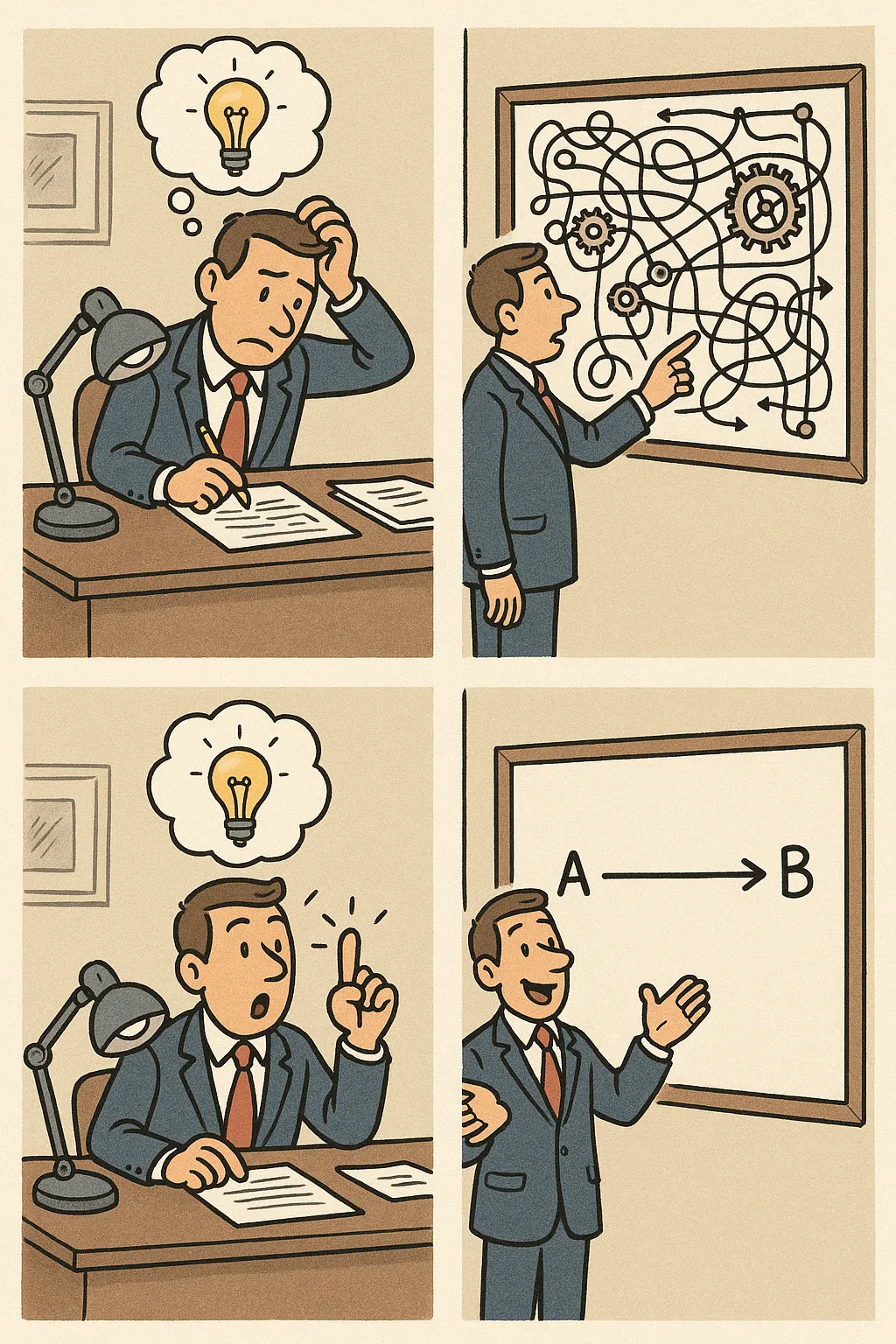
Loving AI But Embracing Simplicity
Loving AI But Embracing Simplicity: A Business Owner's Reminder
You've probably heard the buzz about AI transforming businesses. As someone who helps entrepreneurs build scalable systems, I'm the first to champion these powerful tools. But lately, I've noticed a pattern that's worth addressing: our fascination with brilliant AI solutions can sometimes blind us to simpler, more reliable alternatives.
When the AI Hammer Makes Everything Look Like a Nail
I recently caught myself in this exact trap. I was building what I thought would be an impressive email routing system for our shared inbox, combining Make.com's automation with ChatGPT's intelligence. After several hours of configuring modules and perfecting prompts, I had a realization that made me laugh at myself.
The entire solution could be handled with Gmail's basic filters.
That's right—the straightforward tool that's been around for years could accomplish exactly what I needed, with:
Less complexity
Greater reliability
No ongoing costs
Zero maintenance headaches
History Repeats Itself: My Zapier Phase
The funny thing is, I've learned this lesson before. When I first discovered Zapier, I went through what I now call my "automation honeymoon phase." Suddenly, I saw automation opportunities everywhere and built Zaps for every little thing in my business.
But reality quickly set in when:
I had built automations that took longer than the manual process they replaced. What seemed efficient on paper actually created more work when you factored in setup and maintenance time.
My "just enough to be dangerous" knowledge led to unstable automations that broke at the worst possible times. Nothing quite like explaining to a client why your "streamlined system" suddenly stopped working during their most important transaction.
And now, years later, I'm experiencing the same pattern with AI. The tools have changed, but the lesson remains the same.
The Hidden Costs of Complex Solutions
When you're bootstrapping a business or managing a real estate team, every resource matters—especially your time. Complex solutions carry hidden costs that we often overlook in our excitement:
Learning curve: Time spent mastering new tools
Maintenance burden: Systems that need constant babysitting
Failure points: More moving parts means more potential breakdowns
Dependency risk: What happens when a third-party service changes its API?
I've witnessed too many entrepreneurs scrambling to fix broken automation chains while their clients wait. There's nothing quite like watching your carefully constructed business machine grind to a halt because one link in your fancy automation chain decided to stop working.
Finding Balance: When to Use AI vs. When to Keep It Simple
I still absolutely love AI and automation—they're transformative tools when applied thoughtfully. The key is developing the discipline to ask: "Is there a simpler way to solve this problem?"
When Simplicity Wins:
When reliability is critical to your operation
When the solution will be maintained by someone with limited technical skills
When you need something up and running quickly
When the cost of failure is high
When AI Truly Shines:
For truly complex problems that can't be solved with conventional tools
When the ROI clearly justifies the additional complexity
When you have capacity to maintain and troubleshoot the system
When the solution creates a genuine competitive advantage
A Decision-Making Framework
Before diving into complex AI solutions, try this quick checklist:
Have I clearly defined what success looks like?
Is there an existing tool that could handle this with minimal customization?
What's the simplest solution that would get me 80% of the way there?
Does the additional complexity of my proposed solution truly justify the benefits?
The Bottom Line
As leaders and entrepreneurs, we can embrace cutting-edge technology while still honoring the wisdom of simplicity. It's not about avoiding AI—it's about using it strategically where it truly adds value.
The irony isn't lost on me that I'm relearning with AI the same lessons I learned with Zapier. Maybe the real automation we need is a reminder that pops up whenever we're about to overcomplicate things: "Remember the Gmail filters, Clay!"
I'd love to hear your experiences. Have you ever built an overly complex solution only to discover a simpler alternative later? Or do you have examples where investing in complexity truly paid off? Share your thoughts in the comments below!
Want more straightforward strategies for growing your business without unnecessary complexity? Subscribe to my weekly newsletter for practical tips delivered directly to your inbox.
